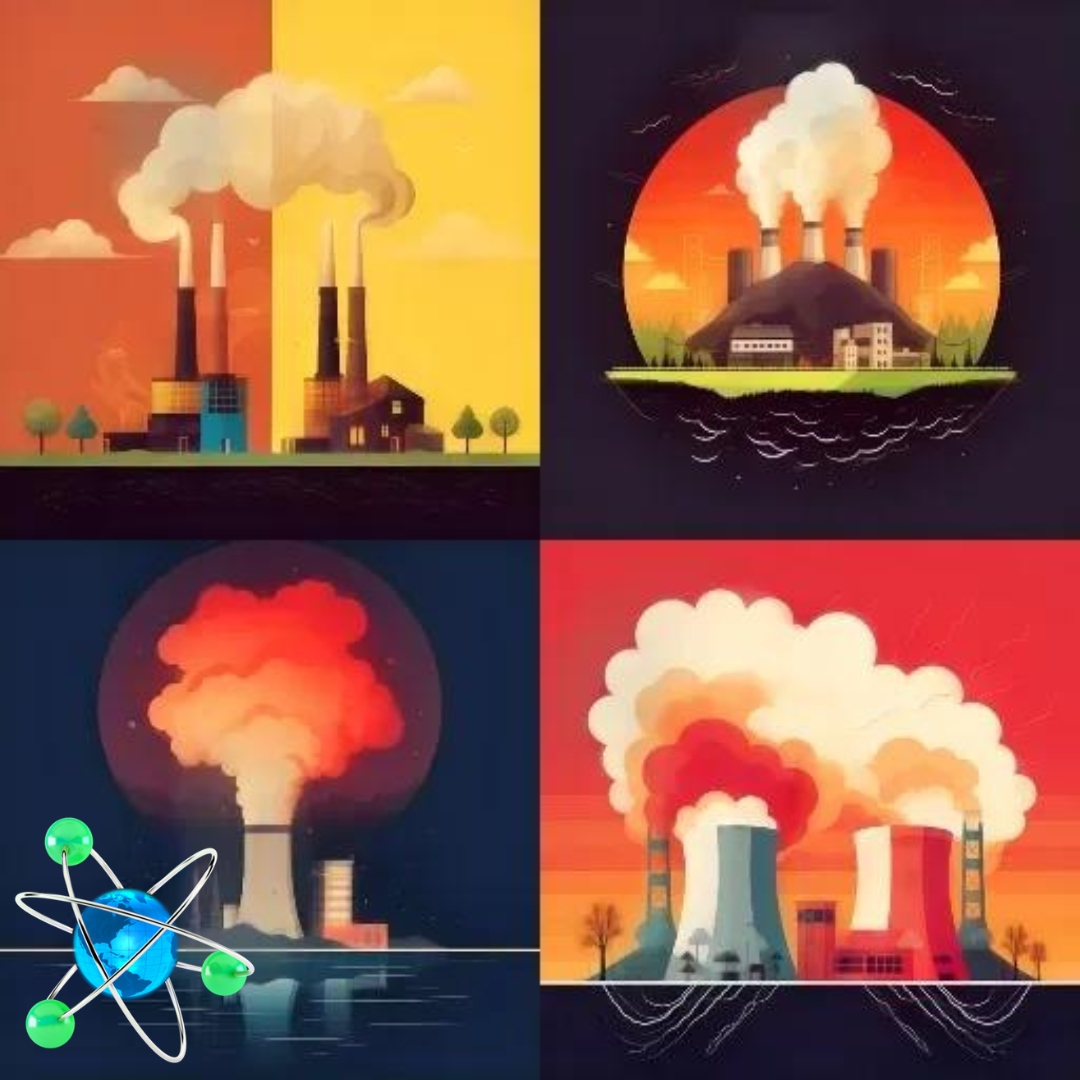
1951 was a seminal year for energy and geopolitics, but Americans at the time could be forgiven for not realizing it. A few months after the United Nations headquarters opened in Manhattan, six nations signed a treaty establishing the European Coal and Steel Community, which would go on to become the European Union, EU. All six except for miniature Luxembourg would later adopt nuclear power. In a moment that would have delighted Thomas Edison, on December 20th an experimental reactor in Idaho lit four light bulbs and became the world’s first power plant to produce electricity from atomic energy. The next day a coal mine exploded outside of West Frankfort, Illinois, killing 119 miners. That explosion sparked Congress’ involvement with coal miners, an involvement that is now poised to bring together nuclear and coal.
A year after the explosion Congress passed a bill that allowed the federal government to inspect mines, close dangerous ones, and required ventilation, leading to decades of mine mechanization and consolidation. Over the next quarter century Congress passed more mine safety bills and during the next six decades US coal production doubled. By 2010 coal provided 45% of US electricity but today is down to about 20%, the same share as nuclear and renewables. The ranks of coal miners fell from 178,000 in 1985 to around 40,000 today and a quarter of the nation’s coal plant fleet is scheduled to retire by 2029. If a recently proposed EPA rule goes into effect, operating a US coal plant profitably after 2040 may become next to impossible. Meanwhile Congress provided tax incentives for clean energy projects to open in so-called energy communities as part of the 2022 Inflation Reduction Act, IRA. These communities include certain types of brownfield sites and high-unemployment areas heavily dependent on fossil fuel extraction, as well as any census tract where a coal mine or coal plant is closed. The number of active coal mines in the US dropped over 60% from 2008 to 2020.
As the US and other nations work to decarbonize their economies, electrification – moving more energy use to electricity – will become crucial. Thus developing and advanced economies will require vastly more electricity in the decades to come, even as fossil fuel-powered electricity is phased out. Although the IRA provides large tax incentives for all forms of zero-emissions electricity production, the slow permitting, limited capacity, and intermittency of wind and solar has driven renewed interest in nuclear power generally and for these energy communities specifically. A “standard” nuclear reactor – the ones in all current commercial plants – produces roughly 1 GW of power in a footprint larger than a coal plant but still only around one square mile. Solar farms and wind farms, by contrast, require scores or hundreds of square miles to produce as much energy. Small modular reactors, SMRs, require less space than legacy nuclear plants and can fit within the footprint of most coal plants. Microreactors can fit within a freight truck, but coal-to-nuclear conversion is focused on SMRs with hundreds of megawatts. Space aside, the main advantages of using coal plant sites for SMRs are reduced NIMBYism, reuse of water and electricity infrastructure, and the presence of a coal plant workforce that can be retrained to operate and maintain a nuclear plant.
The US Department of Energy, DOE, and the Bipartisan Policy Center, BPC, have examined the potential for this type of coal-to-nuclear conversion, and found that fourth-fifths of coal plant sites and three-quarters of coal plant workers may be easily convertible to nuclear plants. The DOE examined the quantity and type of cooling systems and heat sinks, critical for coal and nuclear plants, by type and region of coal plant sites, enabling nuclear developers to understand the magnitude and category of potential cost savings. BPC finds 17%-37% cost savings of coal-to-nuclear compared with constructing a nuclear plant on a greenfield site. Avoiding the need to receive permitting for and then construct nearby transmission lines is highly valuable, a value that may be compounded if the coal plant’s own equipment to connect to the transmission lines can and may be reused.

The non-infrastructure components of coal-to-nuclear conversion may be more valuable in some instances. While most people do not wish to live close to nuclear power plants, the fact that they release no health-harming pollutants likely makes many people more amenable to living near a nuclear plant than near a coal plant, but polling is lacking. For communities that have lived near a coal plant for decades, the choice in future may be between a nuclear plant, with its tax revenue and jobs, and nothing. While most coal plant sites are suitable for nuclear conversion, few are suitable for non-industrial reuses without costly remediation and reconstruction expenditures, and they are too remote to be suitable for most commercial or residential purposes.
Arguably it is the prospect of job creation that will prove most appealing to communities that can bolster or hinder coal-to-nuclear conversions. At most nuclear power plants a quarter of workers require nuclear-specific skills, such as the operators and technicians who ensure that the reactors operate efficiently and safely at all times. The other three quarters have skills applicable to nuclear and coal plants, including mechanics, electricians, welders, plumbers, and security, who could switch from coal to nuclear work with a minimum of retraining. An average standard nuclear power plant requires more workers than an average coal plant, although the reverse may be true for SMRs. Either way, communities that for years have relied on one coal plant to provide stable and well-paid employment to a small but significant share of their residents are realizing that the economics and regulations around coal will likely lead those plants to close this decade or next.
As America’s population of coal industry workers – everyone from miners and plant operators to trade and construction – shrinks, and the population of clean energy workers grows, the outsize political support that coal endears among politicians and voters may shrink, creating further support for nuclear generally and coal-to-nuclear conversion specifically. The DOE found that coal electricity employed only 71,000 workers in 2021 – fewer than a quarter as many people as the Bureau of Labor Statistics reports are fitness instructors. Wind and solar employed 120,000 and 333,000 people, respectively, while nuclear employed 56,000. Wind and solar require far more workers per megawatt hour than nuclear, making it a bigger source of job creation. Even though there are four times as many US coal plants as nuclear plants, coal electricity employs only a quarter more workers. The combination of growing support for nuclear power among both American politicians and voters, and the waning support and profitability of coal plants, may lead to a tipping point where local policymakers view coal and nuclear as similarly attractive options, politically or economically.

Whether coal-to-nuclear conversion becomes common or not, energy markets in the US and EU may change more in the next 15 years than they have in the past 50 as production and consumption adjust to climate change and geopolitics. The 1950s showed how quickly and cooperatively policymakers and regulators could embrace the then-new world of atomic energy if they chose. Only three years after that reactor in Idaho lit light bulbs, construction began on America’s first commercial nuclear power plant. Three years after that the European Coal and Steel Community members signed the Euratom Treaty, establishing a nuclear market for Europe. President Eisenhower agreed to provide technical information and nuclear fuel to the signatories. In sign of issues to come, energy independence was prioritized, as three Euratom officials from France, Germany, and Italy said that nuclear energy would end Western Europe’s dependence on Middle Eastern oil (then 25% of the bloc’s power), and that without nuclear Western Europe would need to import 40% of its fuel by 1975. The trio miscalculated how many reactors Europe would build: by 1973 the Middle East supplied 73% of Europe’s oil.

